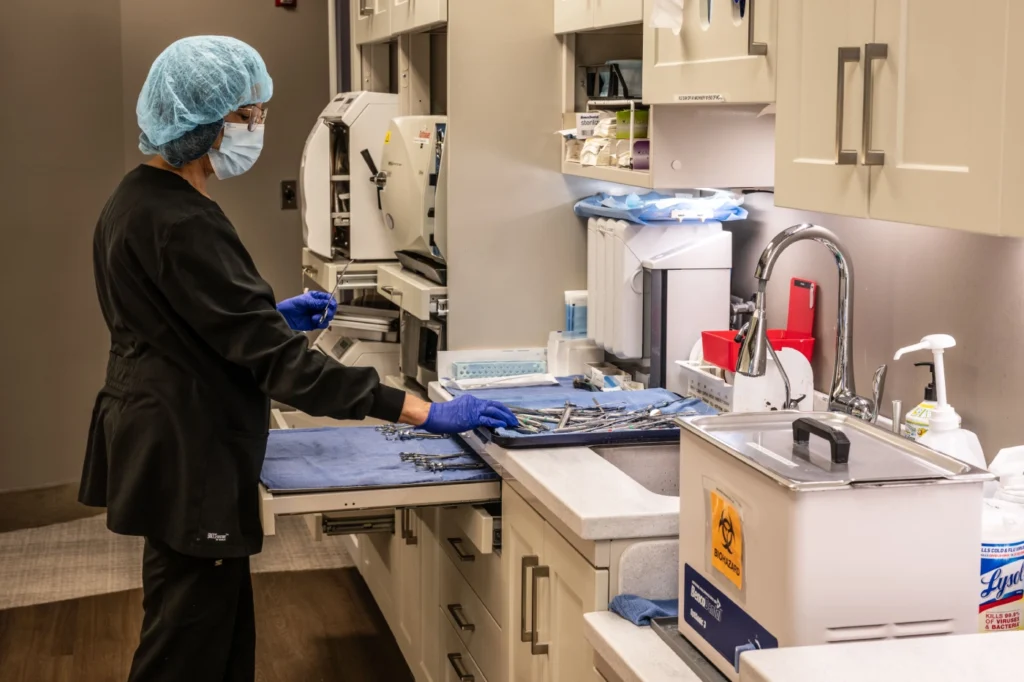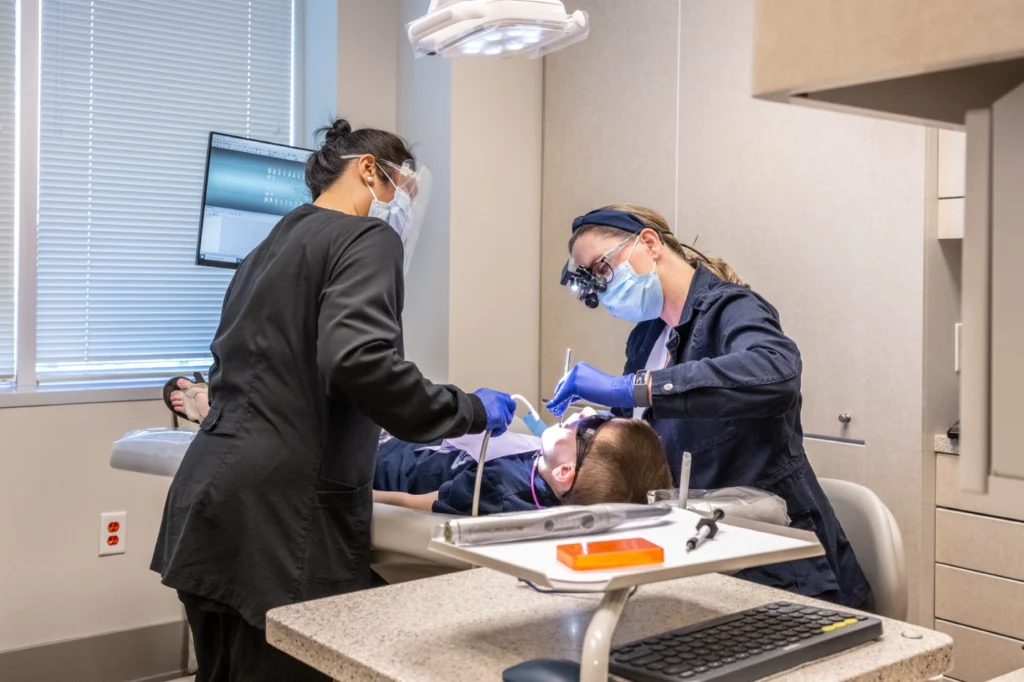
People are living longer and they want to maintain full use of their teeth and keep their beautiful smiles. However, even with proper care, teeth do not always last. The deterioration of a tooth can be due to decay, injury or disease. Whatever the cause of the loss of a tooth, the good news is that a dental implant can be used to rejuvenate your smile, dental function and oral health.
A dental implant is a titanium tooth root, similar in shape to screws. When dental implants are placed in your jaw, they bond with your natural bone. The implant will then hold and support your crowns. The crowns are custom-made to match your natural teeth and fit your mouth. Modern dental implants have been used successfully for over 30 years. They are the strongest devices available to support replacement teeth – and even better, they allow these new teeth to feel, look and function naturally.
When performed by a trained and experienced dental implant dentist, dental implant surgery is one of the safest and most predictable procedures in dentistry. The best candidate for a dental implant is a non-smoker with overall good oral and systemic health and good quality and quantity of bone.

If you are missing a tooth and need it replaced, an implant with a porcelain crown is an good option. If you are missing several teeth in a row, correctly placed implants can be used to support a bridge (a series of porcelain crowns attached the each other). If you have lost all of your teeth, implants can be used as anchors for a full denture.
Implants look natural and feel and act more like normal teeth than dentures. They have the same biting force since an implant is placed into the bone, conventional bridges and dentures are not. This instability can make it difficult to eat or smile without worrying.


Some people will find they need dental implants in the upper back area of the mouth. In certain cases, the sinuses will get larger after the loss of the upper back teeth. Since a dental implant must be surrounded by bone, and sinuses are air-filled cavities, a sinus lift and bone graft must be done before an implant can be placed in the area. The sinus lift and bone grafting procedure restores sinuses to their original size and replaces the bone that was lost due to the enlargement of the sinuses. This newly augmented bone takes about nine to twelve months to fully heal before the dental implants can be placed.
In the event the patient has insufficient bone to support the placement of implants, bone grafting can be done. Your surgeon can explain your options for graft materials. Membranes (filters), bone grafts, or tissue-stimulating proteins can be used to encourage your body’s natural ability to regenerate bone and tissue. The graft fuses with the bone already present, creating support for the implant.
It is not uncommon to find bone loss where an infected tooth has been removed. When this occurs the bone grafting procedure can sometimes be done at the same time the tooth is removed. This is known as developing the implant site. Once the graft is healed, the implant can be placed in the grafted area.
Technology in the dental field is constantly improving and special computer software has been developed that allows us to evaluate CT scans in three dimensions. This allows us to diagnose bone quality, bone quantity and bone location to ensure the best possible placement of each implant.
It’s important to keep your dental implant clean and free of infection. A dental implant can attract and accumulate plaque and tartar in the same way as a natural tooth. Talk to your dentist or dental hygienist about caring for your implant.
The better you care for your replacement teeth, the longer they will last.